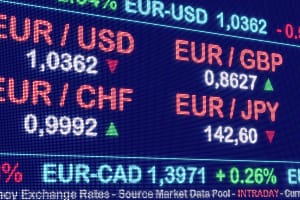The average global fund has turned £1,000 into £3,875 since ISAs were launched in 1999, that’s equivalent to £2,435, after adjusting for inflation.
By contrast the average UK fund would have turned £1,000 into £2,855, or £1,794 after adjusting for inflation.
Best performing funds and trusts since ISAs were launched: smaller companies and far eastern funds head up the leaderboard.
Laith Khalaf, head of investment analysis at AJ Bell, comments: “There can’t have been many worse times to invest than when the ISA was first launched in 1999, just before the dot com crash prompted a deep and prolonged bear market. Indeed, the FTSE 100 took fifteen years to regain the level it stood at just before the turn of the century. However, early ISA investors have experienced the healing power of time in the market, with £1,000 invested in the average global fund now being worth £3,875, or £2,435 after inflation is taken into account.
“Some funds have done considerably better, notably those investing in smaller companies, and in the far east, with the best performing fund and trust both turning £1 invested in 1999 into over £30 today. Both of these sectors sit at the volatile end of proceedings, but the performance numbers suggest the risk has been worth taking for patient investors. Looking forward, the far east may not experience the same boon from globalisation that it enjoyed at the start of this century, but there is still a strong domestic consumption story playing out. These markets can be choppy, and susceptible to government policies as we saw in China last year, but they can’t be ignored, and should play a role in the portfolios of investors with an appetite for risk, and an eye on the long term.
“The same goes for investing in smaller companies. It’s notable that in the three major equity sectors of Europe, the US and the UK, smaller companies funds have opened up a huge performance differential on their large cap cousins. Smaller companies can have a longer growth runway than the big blue chips, simply because they are often newer, potentially disruptive companies, rather than unwieldy incumbents. They do carry a greater risk of failure too, but as a whole, this segment of the market has eclipsed large caps over the long term, and returns have been particularly dazzling where the skills of talented active managers have been applied to sort the wheat from the chaff.
“In sharp contrast to today, the UK All Companies sector was the most popular destination for fund investors in 1999. As the table below shows, this has been one of the worst performing sectors since ISAs were launched. The last twenty years have not been kind to the UK stock market. It was hit especially hard by the financial crisis because of its high exposure to banks, and more recently, Brexit and a low weighting to technology stocks have left it trailing in the wake of other equity regions, most notably the US. Nonetheless even an investment in this relatively poor performer has turned £1,000 into £2,855 or £1,794 after inflation is taken into account.
“For today’s ISA investors, this provides some reassurance. No-one wants to invest on the eve a market crash in an area that ultimately proves to be a laggard, but these figures show that even if you do, you can still harvest a decent real return in the long run. It’s true that inflation has been pretty well contained since the turn of the century, but by the same token, markets have had to overcome the considerable challenges of the dotcom crash, the global financial crisis, and the coronavirus pandemic.
“What’s more, by using your ISA allowance regularly you will invest across a range of market levels. Sometimes, you might catch a market teetering on the brink, like in 1999 or 2007, but you will also invest before big stock rallies, like in 2003 and 2009. Big turning points in markets are only clear with the benefit of perfect hindsight, but by investing regularly, investors can make sure they pick up the smooth along with the rough. Over time, these fluctuations will even out, and total returns will therefore approach long term averages, rather than sitting at the extreme ends of the spectrum.”






Leave a Comment